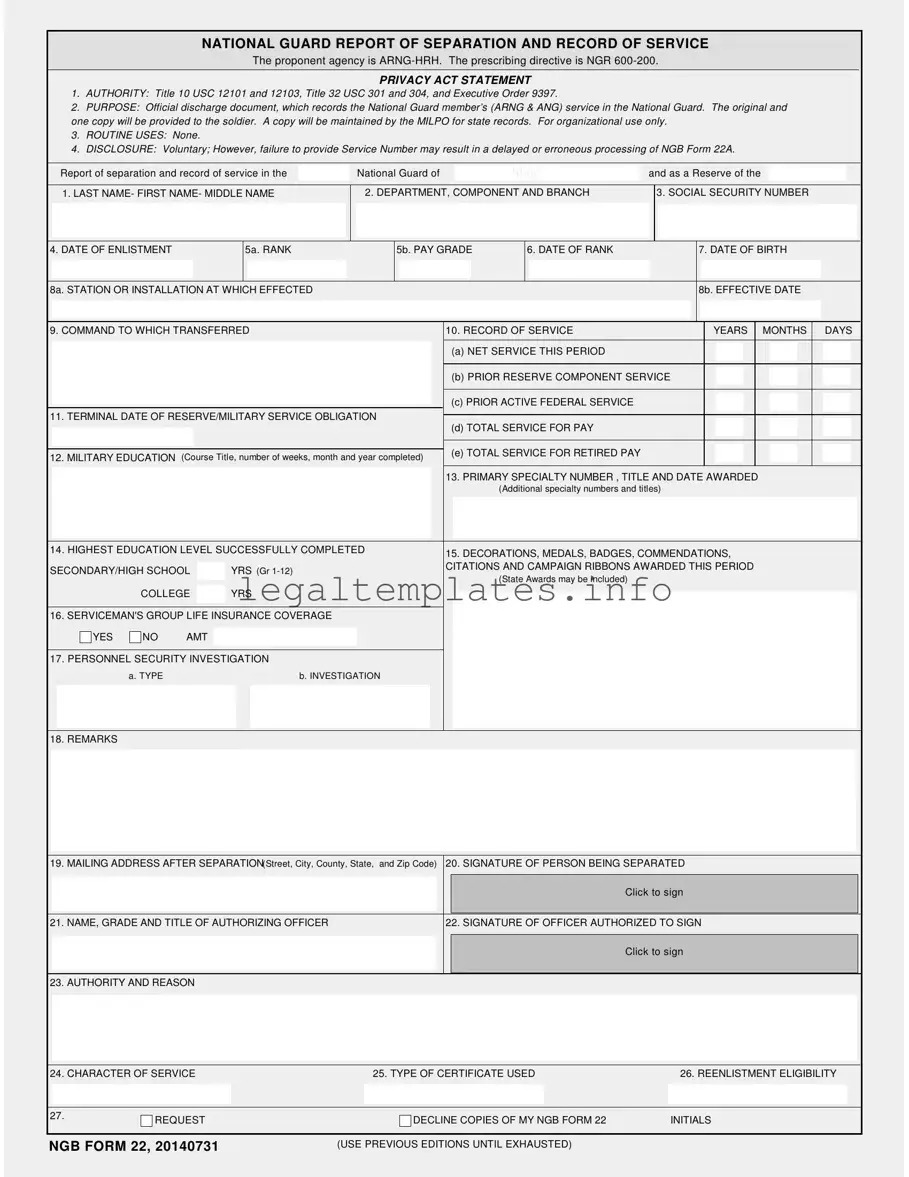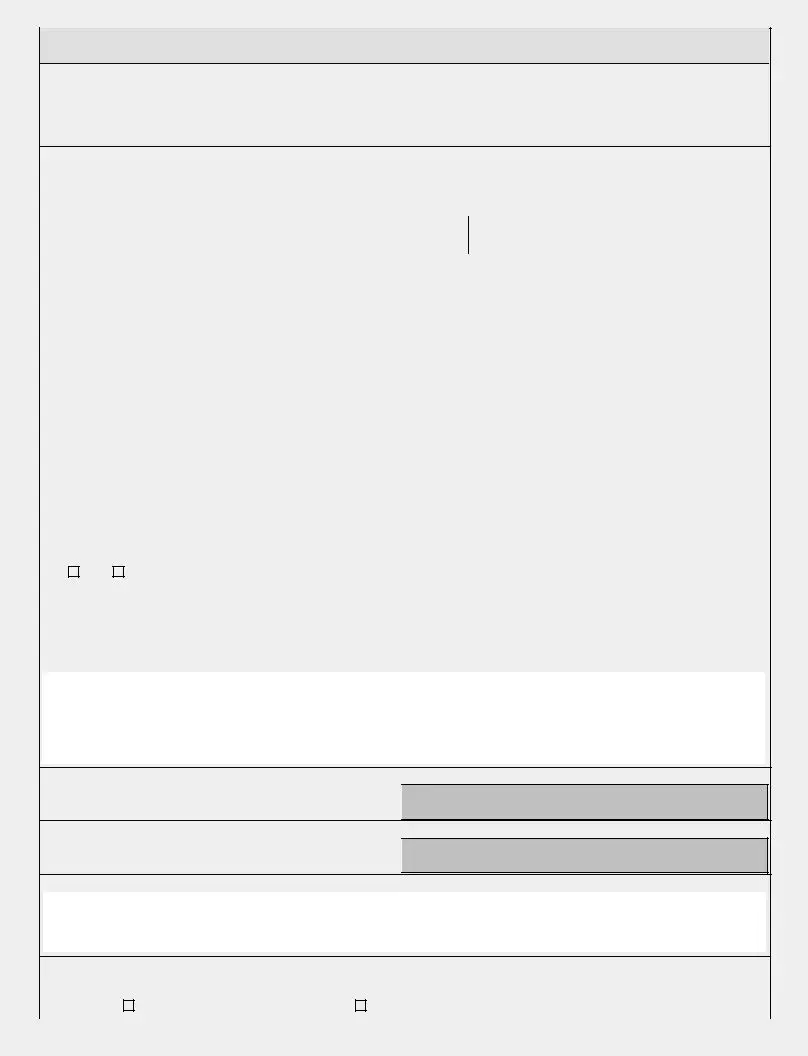What is the NGB 22 Form?
The NGB 22 Form, known as the National Guard Report of Separation and Record of Service, is an official discharge document. It records service details of members in the National Guard, covering both the Army National Guard (ARNG) and the Air National Guard (ANG). This form includes information on rank, dates of service, education, decorations, and reason for discharge, among other details. It serves as a crucial document for veterans seeking to access benefits or verify military service.
Why is the NGB 22 Form important?
This form is vital for several reasons. First, it acts as a formal record of a service member's time in the National Guard, documenting the start and end dates of service, rank, pay grade, and other service-related information. It's often required for veterans to prove military service when applying for jobs, loans, or educational opportunities. Additionally, the NGB 22 Form is necessary for accessing veteran benefits, such as healthcare, retirement plans, and education benefits.
Who issues the NGB 22 Form?
The National Guard issues the NGB 22 Form upon a member's separation from service. It's processed and provided by the Military Personnel Office (MILPO) of the respective state National Guard.
How can I obtain a copy of my NGB 22 Form?
If you need a copy of your NGB 22 Form, you should first contact the National Guard unit from which you were discharged. If they cannot provide a copy, you may approach the National Archive's National Personnel Records Center (NPRC), which maintains military personnel records. You can submit a request through their website or by mailing a Standard Form 180 (SF-180) to the NPRC.
Is there a difference between the NGB 22 Form and the DD Form 214?
Yes, there is a fundamental difference between the two forms. While the DD Form 214 is issued to every service member upon their discharge from active duty service, the NGB 22 Form is specifically for those who served in the National Guard. Both forms serve similar purposes in documenting service details and are used to access veteran benefits, but they pertain to different branches of the military service.
What should I do if I find errors on my NGB 22 Form?
If you discover inaccuracies on your NGB 22 Form, it's important to get them corrected to ensure your military record is accurate, as this might affect your eligibility for certain benefits. You should contact your state's National Guard Military Personnel Office (MILPO) to request a correction. Be prepared to provide documentation that supports your claim for a correction.
What type of information is included in the NGB 22 Form?
The NGB 22 Form includes detailed information about a National Guard member's service. This includes personal identification details, department, component and branch, dates of enlistment and discharge, rank, pay grade, service duration, military education, primary and secondary specialties, awards, and the character of service. It also records the reason for separation and the type of discharge received.
Can civilians access someone else's NGB 22 Form?
Under the Privacy Act, access to military personnel records, including the NGB 22 Form, is restricted to authorized requests. Civilians generally do not have the right to access someone else's NGB 22 without the service member's consent or a compelling legal requirement. Family members may request the form in cases where the veteran is deceased for benefits claims or genealogical research, but this is subject to privacy and archival regulations.
What is the purpose of the "Character of Service" section on the NGB 22 Form?
The "Character of Service" section indicates the nature of a service member's discharge from the National Guard. It reflects whether the discharge was honorable, general under honorable conditions, other than honorable, bad conduct, or dishonorable. This characterization is crucial as it affects a veteran's eligibility for certain benefits and programs.
What to do if I've lost my NGB 22 Form and am unable to retrieve it from any military record facilities?
If you've exhausted all options to obtain your NGB 22 Form through your National Guard unit or the National Personnel Records Center and still cannot find it, it's advisable to compile as much information and documentation of your service as possible. This may include enlistment contracts, orders, medals, correspondence, and other service-related documents. While not an exact substitute for the NGB 22, this documentation can sometimes be used to verify military service for specific purposes or benefits applications. Additionally, consider reaching out to veterans' organizations for assistance and advice on alternative solutions.

